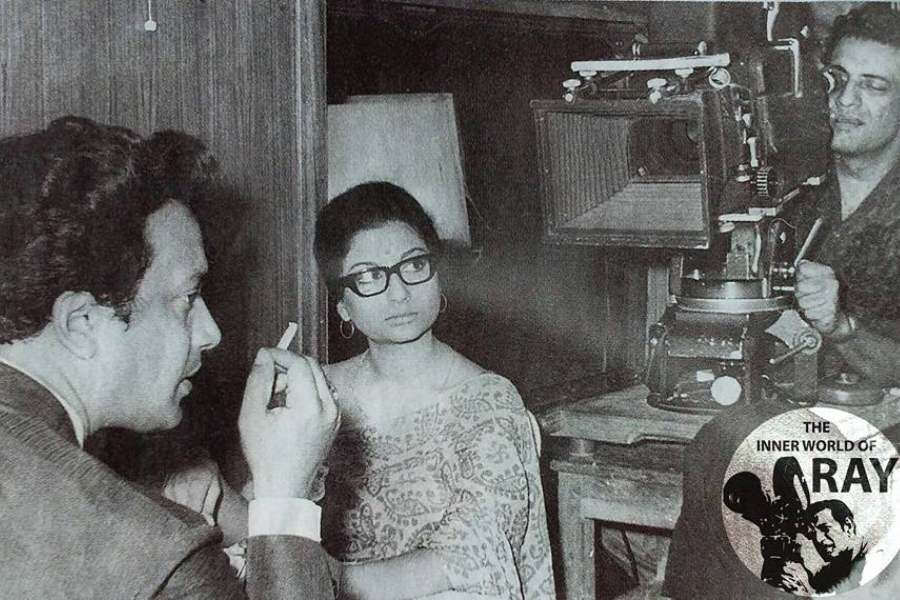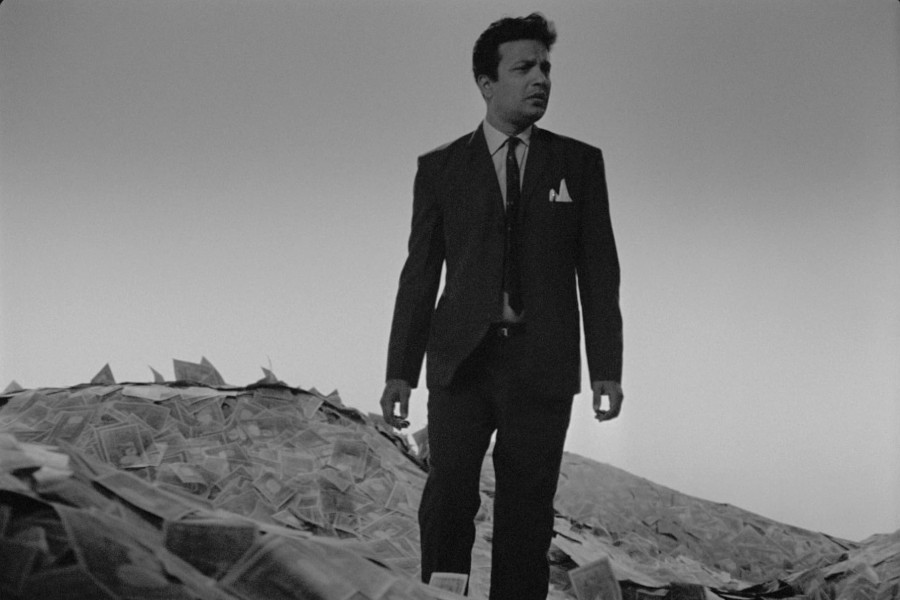Three months into college, I was finally studying something I loved. Except… the subject I was most excited about, Film Studies, didn’t love me back.
Every week, the same cycle repeated. The professor would name an obscure film about an obscure subject in a European language I couldn’t understand. People around me seemed excited. I tried to feign it too. Two hours later, I would find myself struggling to stay awake, registering barely anything except the minutes left until the bell rang.
Three months in, the only lesson I had learnt was that I was too dumb to understand art cinema. I inferred that art was meant to be intimidating. And then came Satyajit Ray’s 1966 film Nayak.
I still remember that lazy afternoon from 2017. I was an 18-year-old, wondering if I had ever truly understood cinema. I prepared myself for yet another lazy afternoon of craving caffeine in the classroom. Except… I fell in love.

Uttam Kumar and Sharmila Tagore with Satyajit Ray behind the camera IMDb
It was a film, set almost entirely in the very trains I had grown up travelling in. I recognised the characters, some quirky, some mysterious. I’d met them. Arindam Mukherjee (played by Uttam Kumar) was much like the film stars I had admired from a distance, and yet felt familiar. This was unlike anything ‘artsy’ I had ever seen.
Most films date with time, but Nayak didn’t. By 2017, with paparazzi culture in full swing, Arindam’s sadness felt heavier than ever before.
On the surface, the film is about a movie star’s journey from Kolkata to Delhi to accept an award. But on the train, he is journeying through parts of himself that he left behind on the way. Satyajit Ray’s second original screenplay – elevated by Uttam Kumar and Sharmila Tagore’s performances – perfectly captures one of the most primitive yearnings of human beings. The need to belong. The emptiness of building an attractive facade, without a structure to back it.
The film changed my perception of art. Rather than being intimidated, I started seeking art that could impact and inspire.
When I heard that PVR Inox was releasing Ray’s Nayak on the big screen this month, I knew I had to watch it. I expected to walk out immersed in the same quiet contemplation that the first viewing had put me through, mesmerised by Ray’s sensitive treatment of characters and Uttam Kumar’s unparalleled screen presence. And a newfound appreciation for Subrata Mitra’s stunning frames, just the way they were meant to be experienced; larger-than-life.
Except… I walked out wondering how much more relevant the film had gotten in 2025.
From 2017 to 2025, ‘fame’ has exponentially become more proximate. Today, everyone can get a bite of the pie, in exchange for performing their lives. But the pie doesn’t taste sweet. The line between celebrity and ordinary is blurred, making fame accessible but also more fragile. This scrutiny isn’t just limited to a movie star. The entire life of every human being with an internet connection is fodder for universal entertainment.
For Arindam, fame was isolating. Today, it is exhausting. We have gone from watching celebrities to consuming them. And they’re doomed to jump through hoops till eternity, fretting over this illusion of stardom that makes them loathe themselves until the algorithm is bored and decides to make a new human its toy. Watching Nayak in this era feels even more haunting. Arindam’s loneliness isn’t the burden of a few but the reality of a generation.
As the masterpiece continues to play in cinemas around us, I am thrilled for every single first-time viewer who will get to experience it on the big screen. But I can’t help wondering, will Nayak feel even more relevant the next time I watch it?
I hope not. I really do.










